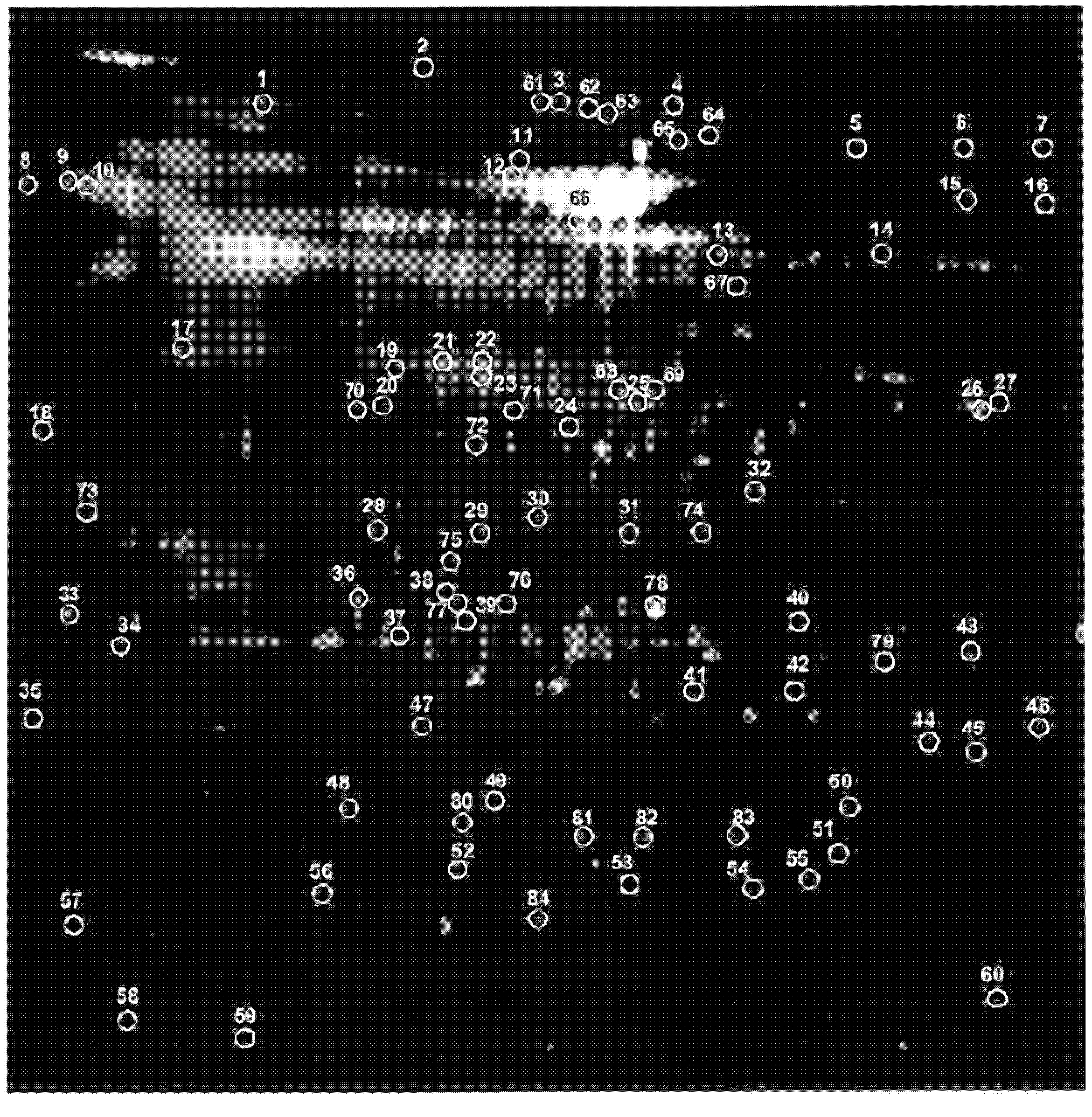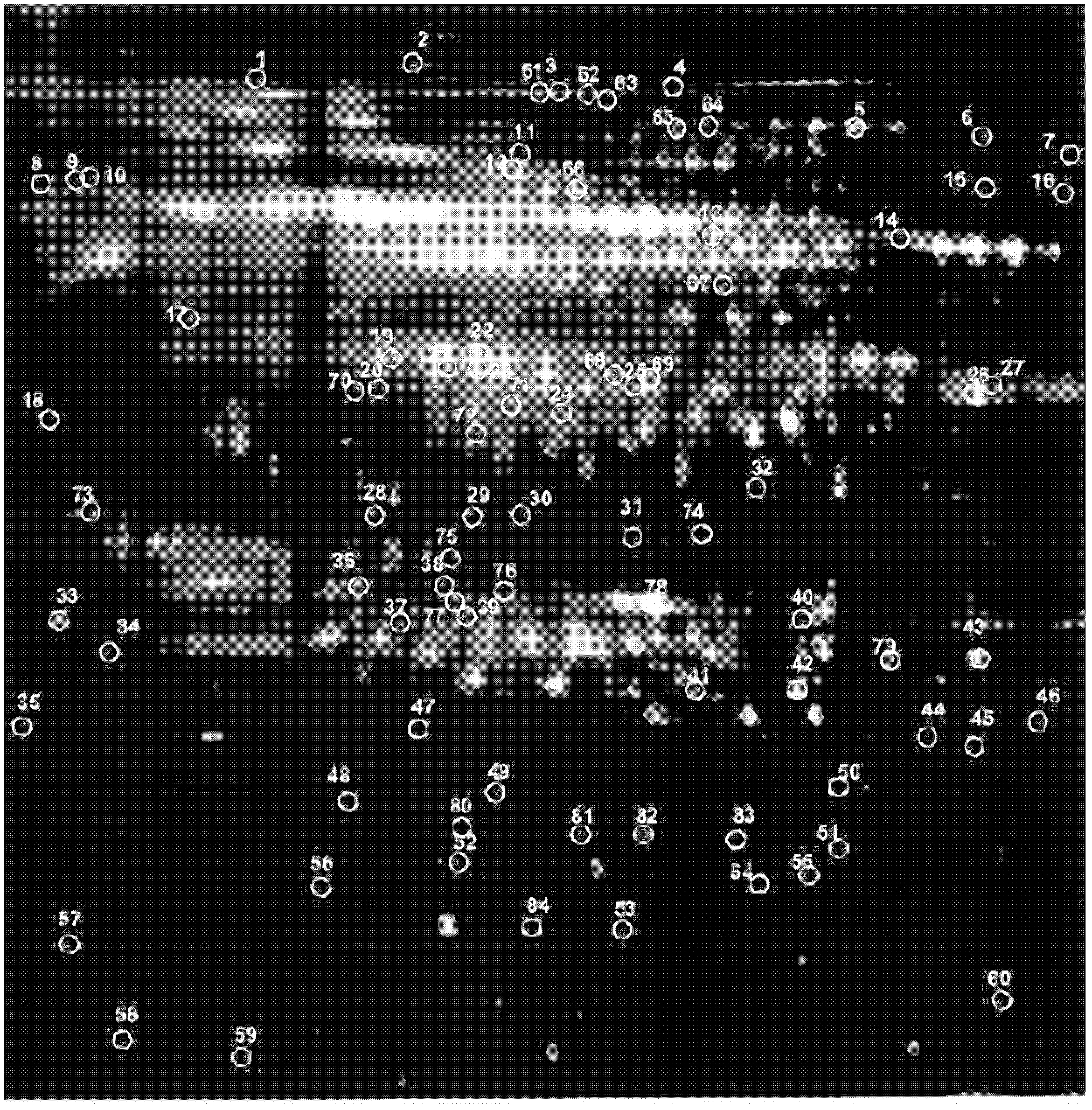Methods for obtaining high-yielding oil palm plants
An oil palm, plant technology, applied in the field of obtaining high-yielding plants
- Summary
- Abstract
- Description
- Claims
- Application Information
AI Technical Summary
Problems solved by technology
Method used
Image
Examples
Embodiment 1
[0114] Two-dimensional differential gel electrophoresis and protein identification
[0115] Target
[0116] Goals include identifying proteins that are differentially expressed in oil palm mesocarp tissue, including high- and low-yield traits, during fruit development.
[0117] method
[0118] Screening groups:
[0119] Two screening populations of oil palm plants were used, a high-yielding screening population and a low-yielding screening population, each comprising 3 individual palm plants. The above screening population was derived from the crossing of Serdang Avenue dura (at least 75% of Serdang Avenue dura) and AVROS pisifera (at least 75% of AVROS pisifera) to produce tenera progeny. More specifically, the high-yielding screen population is from a population of oil palm plants previously determined to be capable of producing relatively high yields of palm oil, specifically more than 10 tons of palm oil per hectare per year, thereby having a high-yielding phenoty...
Embodiment 2
[0171] Functions of 45 unique differentially expressed proteins
[0172] As shown in Table 1, the 45 unique differentially expressed proteins identified in Example 1 were annotated based on predicted molecular functions, involved pathways, and enzymatic classification. Surprisingly, only 3 of these 45 proteins were related to lipid metabolism function. These three proteins are phospholipase D, biotin carboxylase precursor and fructose bisphosphate aldolase. Furthermore, only 17 were successfully mapped to so-called KEGG pathways, ie according to the KEGG (Kyoto Encyclopedia of Genes and Genomes) pathway database, via http: / / www.genome.jp / keg / pathway.html (November 2010 most recently accessed) for pathways in which proteins function in the metabolism of carbohydrates, amino acids, lipids, nucleotides, energy, or secondary metabolism. These 17 proteins include the 3 lipid metabolism proteins mentioned above and 5-methyltetrahydropteroyltriglutamate-homocysteine methyltrans...
Embodiment 3
[0174] Dot blot-like detection of a variety of 45 unique differentially expressed proteins
[0175] Target
[0176] The goals included confirming the protein leads obtained from the DIGE experiments of Example 1 in larger populations of high- and low-yielding oil palms.
[0177] method
[0178] Samples: Mesocarp tissues of 8 high-yielding palms and 8 low-yielding palms obtained at 6 time points, ie, 12 weeks, 14 weeks, 16 weeks, 18 weeks, 20 weeks and 22 weeks after pollination, were used.
[0179] Antibodies: As described in Table 3, antibodies to 27 of the 45 unique differentially expressed proteins were obtained from different suppliers.
[0180] Protein extraction (TCA extraction): Pre-cooled TCA extraction buffer (containing 10% TCA (10 g), 0.007% DTT (70 mg) and acetone (to 100 ml), stored at -20 ° C) at -20 ° C ( 0.2g+0.5ml) was added to the mesocarp sample in fine powder form. The samples were further ground with a small plastic grinder. The samples were mix...
PUM
| Property | Measurement | Unit |
|---|---|---|
| whiteness | aaaaa | aaaaa |
Abstract
Description
Claims
Application Information
 Login to View More
Login to View More - R&D
- Intellectual Property
- Life Sciences
- Materials
- Tech Scout
- Unparalleled Data Quality
- Higher Quality Content
- 60% Fewer Hallucinations
Browse by: Latest US Patents, China's latest patents, Technical Efficacy Thesaurus, Application Domain, Technology Topic, Popular Technical Reports.
© 2025 PatSnap. All rights reserved.Legal|Privacy policy|Modern Slavery Act Transparency Statement|Sitemap|About US| Contact US: help@patsnap.com



